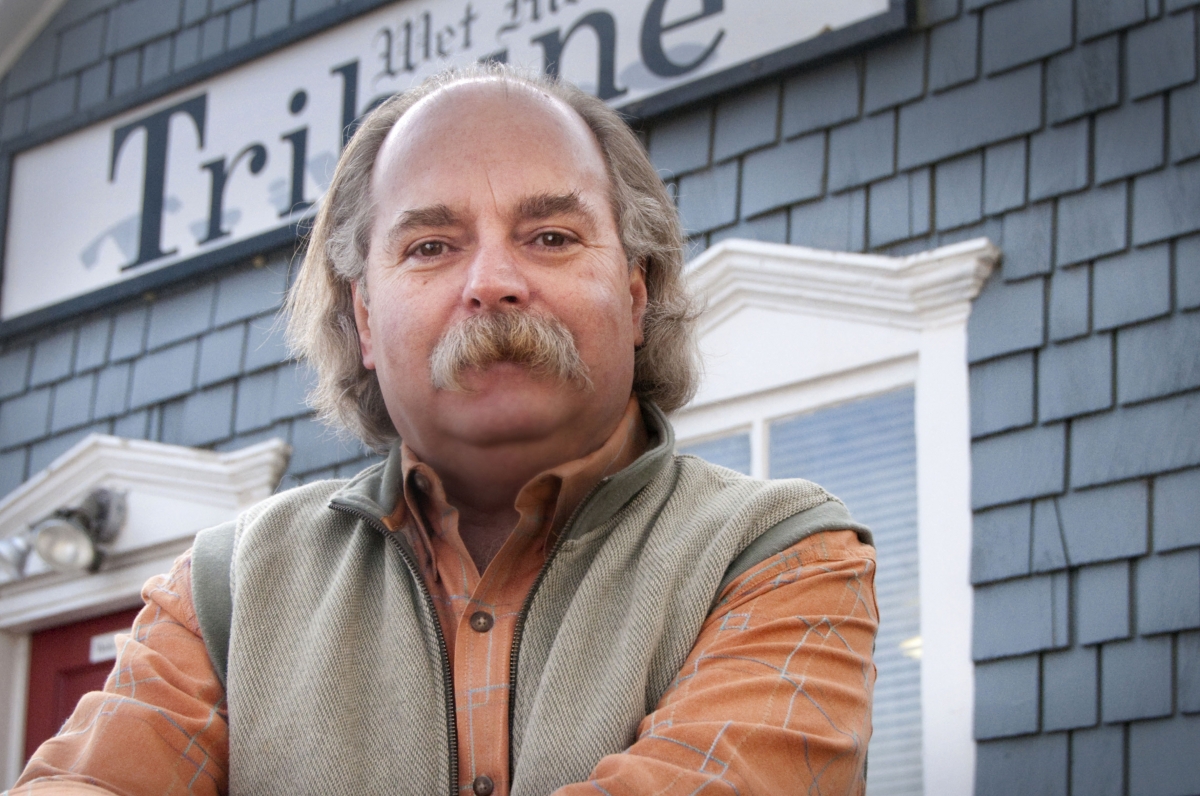 Jim Little, Board Chairman
Jim Little, Board ChairmanCommunity foundations play a big role in all communities, including small, rural ones like Westcliffe, Colorado. Nestled in the beautiful Sangre de Cristo Mountains in Southern Colorado, the Wet Mountain Valley Community Foundation (WMVCF) serves a community of some 4,000 residents – about 5 people per square mile across the region. Its annual Spirit Campaign offers a hands-on way for community members and nonprofits to partner with the foundation in meeting needs and strengthening the community.
Jim Little, long-time publisher of the local newspaper and chairman of WMVCF’s all-volunteer board, emphasizes the importance of these connections. “We live, work and retire here because we just love it,” he said. “In a small community, everybody knows everybody, and they want to help the community move forward for the benefit of everybody.”
The Wet Mountain Valley Community Foundation began its Spirit Campaign in 2004 as a means to generate more resources and to create engagement and dialogue among both community members and the 70-plus nonprofit organizations that serve the region.
While the foundation’s board wasn’t sure what to expect at the outset, they quickly learned that community members were eager to be philanthropists. The enticement of the campaign’s matching funds, combined with locally-focused giving has provided residents with the ability to generously support their own community. And more than a decade later, residents’ support continues to grow. Initially, WMVCF offered $25,000 in matching funds and donations were received from about 200 community members, providing $120,000 in support for area nonprofits. By last year, giving had more than doubled, with the campaign generating donations from 700-plus community members and a larger pool of matching funds courtesy of additional contributions from the Anschutz Foundation. Last year the campaign distributed more than $320,000 to Custer County nonprofits, and since its inception the campaign has provided more than $3 million in support.
Each February, following the mid-November through December campaign, the foundation hosts a gathering of all of the area nonprofit organizations. Before handing out checks to each organization (yes, all of them receive funding), they spend time talking to one another, sharing information about what they are working on and what has been accomplished, and together they consider how to address future needs. The grants, which support the arts, education, recreation, historic preservation, emergency services, health care, land conservation and more, are important says Little, but the benefits far exceed grant checks. “Money is important but often the recognition that they’re doing a good thing puts wind in their sails. The recognition reinvigorates and motivates them.”
As a new member of Philanthropy Southwest, Little looks forward to making new connections, sharing the spirit of the Wet Mountain Valley community, and learning more about what other foundations are doing that might help them to grow and further strengthen their efforts.
Philanthropy Southwest bring together philanthropists, foundations and partners, fostering deep relationships to harness the power of a shared passion for social change. With a membership of 1,600 foundation trustees and 700 foundation staff from 230 grantmaking organizations across the southwest, our base is large enough to provide diversity, and small enough to ensure personalized attention. If you are not already a member, please join us!
Different Communications for Different Generations
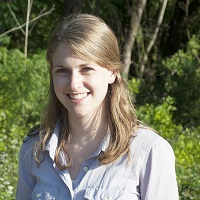 The four distinct generations co-existing in today’s workplace is prompting foundations to become more adept at tailoring how they communicate, both internally and with community partners. Traditionalists (born between 1927 and 1945) tend to prefer personal conversations, Baby Boomers (1946-1964) like telephone conversations, Generation Xers (1965-1980) gravitate toward email and Millennials (1981-2000) rely more on text messaging and social media. While knowing generational preferences is helpful, people are rarely one dimensional so it’s best when communications are both tailored and reinforcing.
The four distinct generations co-existing in today’s workplace is prompting foundations to become more adept at tailoring how they communicate, both internally and with community partners. Traditionalists (born between 1927 and 1945) tend to prefer personal conversations, Baby Boomers (1946-1964) like telephone conversations, Generation Xers (1965-1980) gravitate toward email and Millennials (1981-2000) rely more on text messaging and social media. While knowing generational preferences is helpful, people are rarely one dimensional so it’s best when communications are both tailored and reinforcing.CAPACITY BUILDING: FOUNDATION TO FOUNDATION
 Foundations regularly provide capacity building support to nonprofit organizations, but it’s less typical for foundations to support the growth and capabilities of fellow funders. “Institutional mentoring goes beyond promoting a sense of collegiality between two foundations,” said Louisa McCune-Elmore, executive director of the Kirkpatrick Foundation. “It strengthens the abilities of both foundations to learn more about the communities they serve, reach out to new and different partners, and promote areas we’re interested in.”
Foundations regularly provide capacity building support to nonprofit organizations, but it’s less typical for foundations to support the growth and capabilities of fellow funders. “Institutional mentoring goes beyond promoting a sense of collegiality between two foundations,” said Louisa McCune-Elmore, executive director of the Kirkpatrick Foundation. “It strengthens the abilities of both foundations to learn more about the communities they serve, reach out to new and different partners, and promote areas we’re interested in.”
Her foundation’s capacity building support for the Southwestern Urban Foundation came about following a meet-and-greet lunch the Kirkpatrick Foundation hosted soon after McCune-Elmore came on board as the then-new executive director. It was an opportunity for her to meet peers from other Oklahoma City-based foundations, and to learn more about the community’s philanthropic landscape. The conversation and energy at the luncheon encouraged Leonard Benton to follow-up with McCune-Elmore to explore possibilities. Having served as executive director of Southwestern Urban Foundation for a decade, Benton knew it was time to intentionally move from being a “feel good foundation, to a focused foundation.”
Dedicated to family development, children, youth and education, Southwestern Urban Foundation’s board and staff is made up fully of African-American leaders. “We are trying to demonstrate that we can give back to the community,” said Benton. “People typically think of the African-American community as being in need, that we’re always asking for help, not positioned to give help. We need to organize ourselves in a philanthropic manner so that we are perceived as donors.” As well, said Benton, after 10 years as “a check writing foundation, you realize you can’t be everything to everybody.”
While Southwestern Urban Foundation was well established, with a growing board and grantmaking, its resources were insufficient to support organizational development. The Kirkpatrick Foundation’s relatively modest grant support of $12,500 gave the smaller Southwestern Urban Foundation the ability to redefine its direction and mission, develop a strategic plan, and communicate about their grantmaking through a new website and marketing materials. Kirkpatrick staff also encouraged and supported Southwestern Urban Foundation in becoming a member of Philanthropy Southwest. This membership has helped Benton and his colleagues get to know other funders, cultivate relationships, and identify opportunities for partnerships. “These associations have helped us to become a bridge builder for the African-American community, connecting them to much greater resources available from larger foundations and corporate entities,” said Benton.
“It seems funny to me to say that we are mentoring someone like Leonard,” said McCune-Elmore, “when the reality is he has been such a mentor to so many people and groups in our community. The bottom line for us is that the Kirkpatrick Foundation has 60 years of experience, bright staff and trustees, and significant philanthropic leadership. If we can share our best practices with other philanthropists, that’s something we prioritize. And while we always hope to open the eyes of others to areas that are of interest to us, none of this is quid pro quo. These types of foundation-to-foundation connections are characterized by friendship and integrity, increasing our ability to hear, learn and grow.”
Bringing About Change on Divisive Social Issues
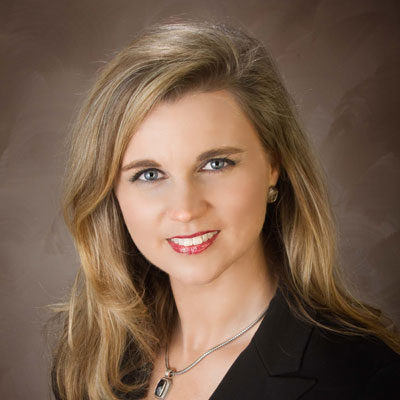 “We have learned a lot about how to affect change on politically-charged issues,” says Ashley Allison, executive director of the Waco Foundation, “but there is always more to learn. Fortunately, there also are funders willing to share their expertise.” Allison is part of a team that developed an annual conference session about grant strategies to address controversial societal challenges. Forrest Alton, the dynamic CEO of the South Carolina Campaign to Prevent Teen Pregnancy will lead the session on November 7th during Philanthropy Southwest’s upcoming Annual Conference in Arizona. While the issue being used as an example in the session is teen pregnancy, Allison believes the grantmaking approach can be applied to any number of complex issues. “Often times one issue a foundation is focusing on leads them to another, connected challenge and the realization that root causes must be addressed – that there isn’t a simple solution,” says Allison.
“We have learned a lot about how to affect change on politically-charged issues,” says Ashley Allison, executive director of the Waco Foundation, “but there is always more to learn. Fortunately, there also are funders willing to share their expertise.” Allison is part of a team that developed an annual conference session about grant strategies to address controversial societal challenges. Forrest Alton, the dynamic CEO of the South Carolina Campaign to Prevent Teen Pregnancy will lead the session on November 7th during Philanthropy Southwest’s upcoming Annual Conference in Arizona. While the issue being used as an example in the session is teen pregnancy, Allison believes the grantmaking approach can be applied to any number of complex issues. “Often times one issue a foundation is focusing on leads them to another, connected challenge and the realization that root causes must be addressed – that there isn’t a simple solution,” says Allison.
Such was the case in the Waco Foundation’s decision to address teen pregnancy. “We didn’t think we’d get into teen pregnancy,” she says, “but, with an initial focus on early childhood education, we drew a straight line between a strong evidence base showing the critical importance of early nurturing, learning and health care with the ability of young children to thrive, and the high percentage of teen parents’ inability to meet these essential early needs.” The rate of teen pregnancy remains particularly high in the southwestern United States. New Mexico had the highest teen pregnancy rate, in 2010, followed by Mississippi, Texas, Arkansas, Louisiana and Oklahoma.
Some of the key strategy lessons Allison says they have learned over the past two years include:
- Call attention to the problem. Through media coverage, public forums, political speeches and other means, the first thing you need to do is shine a light on the problem, its root causes and the need to find solutions – get people ready to talk.
- Engage a broad spectrum of players to be part of the solution. Seek to understand what the community really thinks about the problem, as well as potential solutions. Don’t limit yourself to the loudest voices, be sure to gather information and have ongoing dialogue with a wide array of individuals and groups who touch on all aspects of the problem and differing views.
- Present research findings and potential solutions to the community. Share back what you learn so that others can see the full spectrum of views. Bring evidence-based programs to the fore, continuing the conversation with the community about how to implement and support program, systems and policy solutions.
- Continue to learn. While there are unique aspects to each issue and community, there also are many similarities in how foundations can help to bring about change.
“In addition to having leading national experts like Forrest with us during the conference, Philanthropy Southwest members also make up a powerful network of professionals,” says Allison. “They readily share their diverse experiences in grantmaking and change strategies. This is invaluable because we face a lot of the same challenges across the southwest and can build off the strength of each other’s work.”
Targeted Connections, Deeper Impact
 Antoinette Malveaux, Managing Director
Antoinette Malveaux, Managing Director
Casey Family Programs, Seattle, Washington
As a national foundation, Casey Family Programs joined Philanthropy Southwest to help us connect more directly with other foundations that also have an interest in child welfare and improving outcomes for vulnerable children, youth and families. Our desire is to share knowledge about our work, learn about related efforts of other funders, and explore ways to work together. In addition to the connections we have made through attending conferences and participating on committees for the association, we asked Philanthropy Southwest to provide us with tailored assistance to make specific connections to further our work. Casey wanted to convene funders and government representatives in Texas to have a dialogue about child welfare in the state. We knew Philanthropy Southwest staff have extensive knowledge of the philanthropic sector and strong relationships with foundations in the region, and Casey partners across the country with child welfare leaders. Casey brought the new head of the Texas child welfare system to talk about their priorities and to identify potential partnership areas with foundations that Philanthropy Southwest brought into the conversation. Philanthropy Southwest played a valuable role in helping us to achieve the first step in our goal, aiding us in finding the funders interested in working together with government leaders so that we might all work together to deepen our impact.
Mobilizing Action
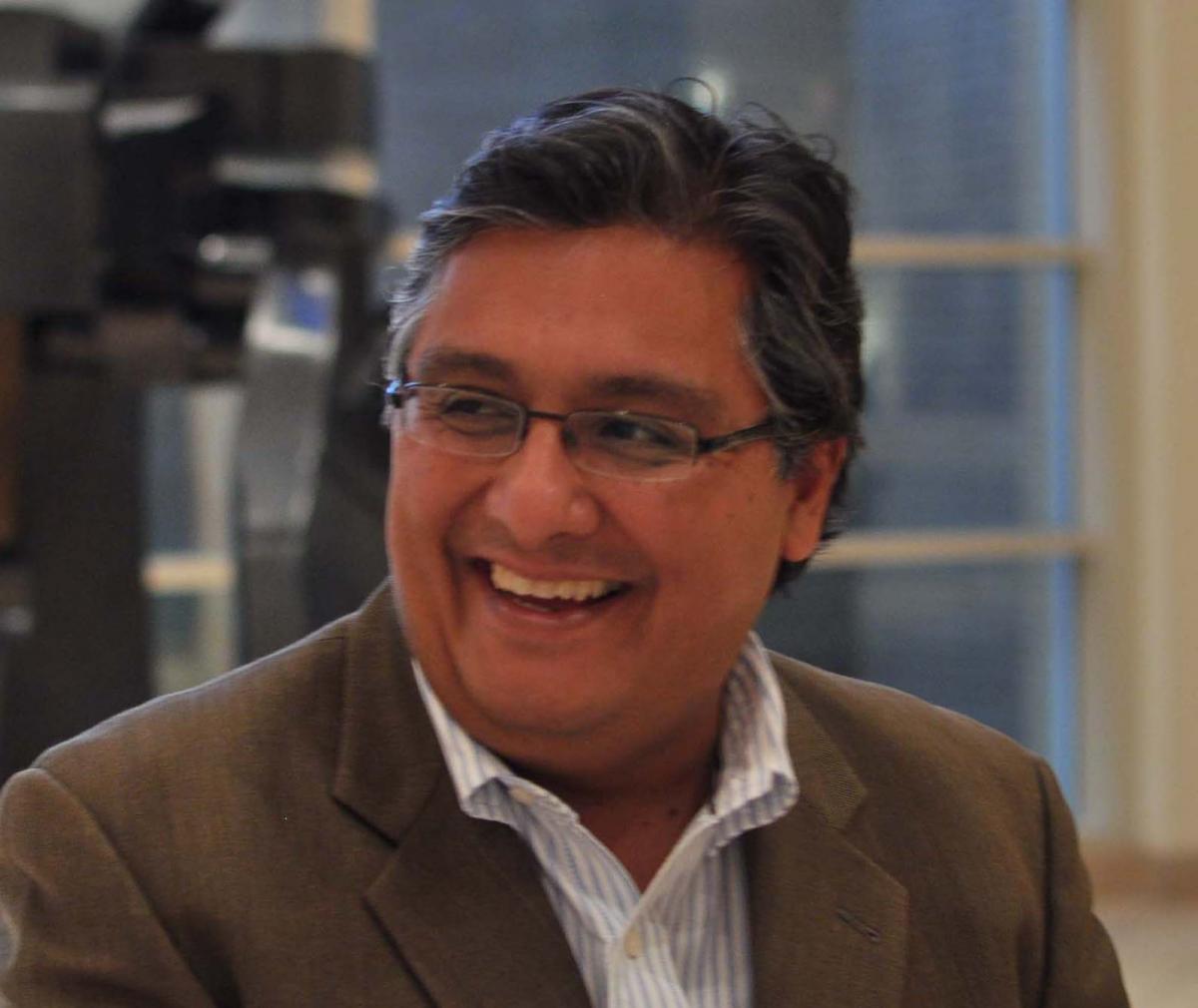
Eusebio Diaz, Vice President of Program
Baptist Health Foundation of San Antonio
Over the years, I’ve learned that many issues cannot be addressed by a single foundation. Multiple funders need to align their mutual interests and work together to address complex, intractable challenges, and to make a greater impact. Still, some foundations tend to shy away from things that are not their own initiative. And this is where Philanthropy Southwest is so valuable. They have their ear to the ground and know when to help bring people together, and they’re extremely skilled at facilitating productive conversations – it’s a root part of their culture. They model the type of cordiality that strengthens relationships. In Texas, for example, we have had a big gap in mental health services. Philanthropy Southwest was instrumental in bringing funders together to talk about how we might collectively address this need. The initial multi-funder dialogue they convened served as a springboard, and has grown into an informal, but regular commitment by a group of Texas funders to work together on mental health issues. And these meetings, together with a feasibility study by another funder, led to six foundations pooling resources and working together to address the gaps in autism care and services.
Passion & Data Spark Action
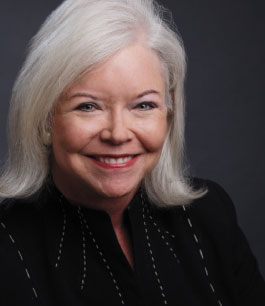 Mary Jane Rynd, Executive Vice President and CFO
Mary Jane Rynd, Executive Vice President and CFO
Virginia G. Piper Charitable Trust, Phoenix, Arizona
At its annual conference and in smaller venues, Philanthropy Southwest regularly delivers thought leaders who wake you up to critical issues and help you think through how to take action to address significant needs. One such presenter who clicked for us was Steve Murdock. As former director of the U.S. Census Bureau (currently a professor at Rice University), he presented incredibly compelling research on the Latino education drop-out rates in Texas. His passion and data led the Virginia G. Piper Charitable Trust to commission a study of this same issue in Arizona.
Together with the Helios Education Foundation and the Morrison Institute for Public Policy at Arizona State University, we produced “Dropped: Latino Education and Arizona’s Economic Future,” a report designed to prompt a frank discussion about the state’s commitment to education and to developing a skilled and educated workforce. Among other efforts, this report led us to support a new literacy director for the state. She is taking findings from our report to help us and others in Arizona be smart about making good investments that improve the educational possibilities for our Latino youth.
High Touch Trumps High Tech
Bob Reid, Executive Director
J. F Maddox Foundation, Hobbs, New Mexico
In a high-tech world, I think it’s important for grant makers to consider the value of a high touch association like Philanthropy Southwest not just for their own work, but for the field as a whole.
While there is value in a wide array of information from differing sources, the insights I have gained and lessons learned by personally connecting with others in the field have by far been the most valuable to me. Philanthropy Southwest is a very rich resource in this regard. They are unparalleled in terms of providing networking opportunities and in offering personalized connections. Time and again they helped our foundation avoid reinventing the wheel by connecting us with just the right people to learn and think through effective approaches to our work.
I worry, though, that the increasingly autonomous nature of philanthropy encourages a disconnectedness that prevents us from learning from others. We need to protect against this. If our grant making isn’t well informed, if our efforts aren’t as effective as possible, and if we aren’t strongly connected as a field, we invite more questions and the possibility of less autonomy. By working together, we have a better chance to ensure that our philanthropy isn’t just window dressing, but has rigor and the ability to effect real change.
